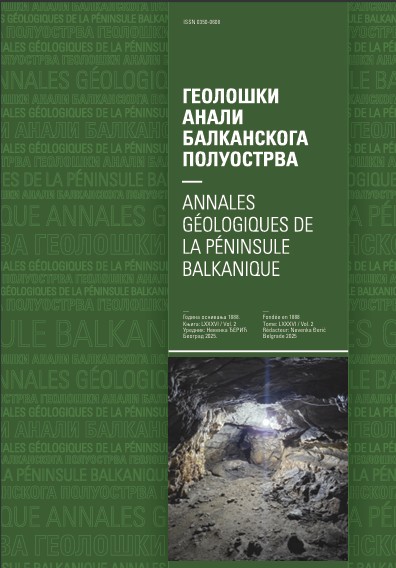Internal structure of Supragetic basement (Serbian Carpathians, eastern Serbia) and its significance for late Early Cretaceous nappe-stacking
Abstract
Fault-related folds and hanging-wall structures reflect the geometry of the main thrusts in fold-thrust belts. The results of the structural analysis of the Supragetic Unit metamorphic basement in easternSerbia at map-, outcrop- and thin-section scale, and its importance for the late Early Cretaceous nappe-stacking are presented in this paper. The Supragetic Unit metamorphic basement includes various volcano-sedimentary rocks of Ordovician-Si-lurian protolith age. They were metamorphosed to the low greenschist facies with temperatures reaching 300–350°C and pressure reaching 0.3–0.5 GPa. The microscale studies show that quartz and albite demonstrate dominantly bulging and locally subgrain rotation recrystallisation, while chlorite, sericite and muscovite define spaced to continuous foliation recognised both at the outcrop- and the thin-section-scale. The statistical analysis based on the available map data shows low- to high-angle west-dipping foliation which is interpreted as an indicator of flat-ramp geometry of the Supragetic thrust, rather than east-vergent tight to isocli-nal folding. At the thin-section scale ductile to semi-ductile C’-S structures indicate top to ESE thrusting. Subsequent kinking, recognised both at the outcrop- and the thin-section-scale, deform the older foliation.Those kink bands are the result of WNW–ESE to NW–SE compression and could represent the later stage of a continuous deformation event during which C’-S structures were formed. The youngest, brittle deformationis represented by subvertical joints with no offset recognised in thin-sections. The structural characteristics of the Supragetic Unit low-grade metamorphic basement in the studied areas,combined with tectonothermal events recognised elsewhere in Dacia mega-unit, could imply a possible initiation of the late Early Cretaceous nappe-stacking in the ductile to semi-ductile/semi-brittle domain.
Copyright (c) 2017 Geološki anali Balkanskoga poluostrva

This work is licensed under a Creative Commons Attribution 4.0 International License.










